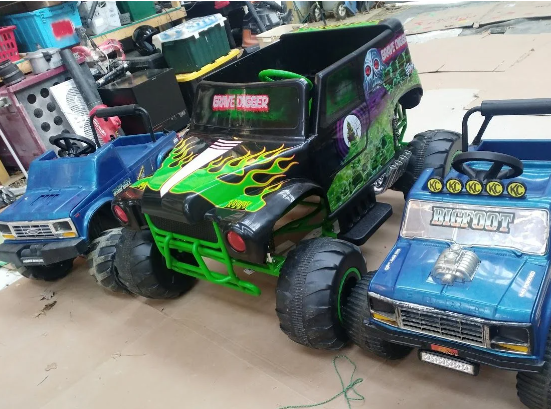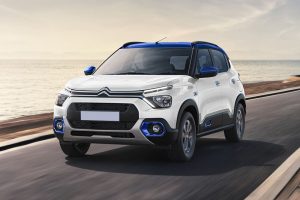Power and Control Wheels in Ride-On Vehicles: Enhancing Safety and Performance
3 min read
Children have long enjoyed ride-on vehicles, which provide a taste of independence and excitement. These miniature cars and trucks feature sophisticated power and control wheels that ensure smooth operation, safety, and enjoyable riding experiences. This article delves into the complexities of power and control wheels in ride-on vehicles, including their evolution, components, and effects on safety and performance.
Understanding Power and Control Wheels in Ride-On Vehicles
Power and control wheels in ride-on vehicles are the systems that manage the miniature vehicles’ propulsion, speed, and directional control. Whether it’s a battery-powered car for toddlers or an electric ATV for older children, these components are critical to ensuring a safe and enjoyable ride.
Evolution of Power and Control Systems
1. Mechanical Transmissions
- Early ride-on vehicles had simple mechanical transmissions similar to bicycles, with chains, gears, and pedals.
- These systems provided basic speed and direction control, but required the rider’s physical effort.
2. Introduction of Electric Motors
- Ride-on vehicles began to use electric propulsion systems as battery technology and electric motors advanced.
- Electric motors provided smoother acceleration, quieter operation, and eliminated the need for manual pedaling, improving the user experience.
3. Development of Electronic Control Units (ECUs)
- Modern ride-on vehicles use electronic control units (ECUs) to regulate motor performance, battery efficiency, and safety features.
- ECUs monitor speed, battery voltage, and motor temperature to improve performance and prevent overheating or overloading.
Components of Power and Control Wheels
1. Electric Motors
- Electric ride-on vehicles are propelled by electric motors that vary in size and output depending on the vehicle’s intended use and age range.
- Motors can be brushed or brushless, with brushless motors being more efficient and durable.
2. Battery Systems
- Electric motors on ride-on vehicles are powered by rechargeable batteries, which are typically 6V, 12V, or 24V.
- Battery systems include safety features like overcharge protection and low-voltage cutoff to help extend battery life and prevent damage.
3. Speed Controllers
- Electronic speed controllers (ESCs) control the speed and acceleration of ride-on vehicles by regulating the amount of power delivered from the battery to the motor.
- ESCs provide smooth acceleration and braking, which improves control and safety for young riders.
4. Safety Features
- To protect young riders while they play, ride-on vehicles include parental speed lockouts, seat belts, and emergency brakes.
- These features ensure that children can enjoy their ride-on vehicles safely while under parental supervision.
Impact on Safety and Performance
1. Enhanced Control and Maneuverability
- Power and control wheels make ride-on vehicles more maneuverable, allowing children to easily navigate obstacles and turns.
- Precise control systems allow for gradual acceleration and deceleration, reducing the risk of accidents.
2. Battery Efficiency
- Advanced power management systems optimize battery usage, increasing ride time and reducing recharging time.
- Intelligent battery monitoring prevents overdischarge, ensuring the battery’s long-term health and performance.
3. User Experience
- Smooth operation and responsive controls improve the user experience, making ride-on vehicles more appealing and engaging to children.
- Integrated safety features give parents peace of mind while allowing children to explore and play safely.
Future Trends and Innovations
1. Integration of IoT and Connectivity
- Future ride-on vehicles could include IoT connectivity for remote monitoring, firmware updates, and improved safety features.
- Connectivity enables real-time diagnostics and performance optimization, thereby increasing overall vehicle reliability.
2. Autonomous Features
- Future advancements in sensor technology and artificial intelligence may enable semi-autonomous or fully autonomous ride-on vehicles.
- Autonomous features such as obstacle detection, self-parking, and adaptive cruise control could improve safety and convenience.
3. Environmental Sustainability
- Manufacturers are increasingly emphasizing sustainable materials and energy-efficient technologies for ride-on vehicles.
- Electric propulsion and lightweight materials minimize environmental impact while encouraging eco-friendly play options.
Conclusion
Power and control wheel in ride-on vehicles combine technological innovation with practical safety considerations. Mechanical transmissions have evolved into sophisticated electronic control units to improve the safety, performance, and user experience of children’s ride-on vehicles. As technology advances, future innovations promise to redefine the capabilities and possibilities of ride-on vehicles, ensuring that they continue to be a popular source of joy and adventure for future generations.
Whether it’s a mini sports car, a rugged ATV, or a whimsical truck, the power and control wheels in ride-on vehicles fuel countless hours of imaginative play and outdoor adventure. Understanding these components enables parents and caregivers to select ride-on vehicles that prioritize safety, durability, and educational value, thereby enriching our children’s childhood experiences.
More information about technology and Rideon’s visit : https://fyberly.com/



